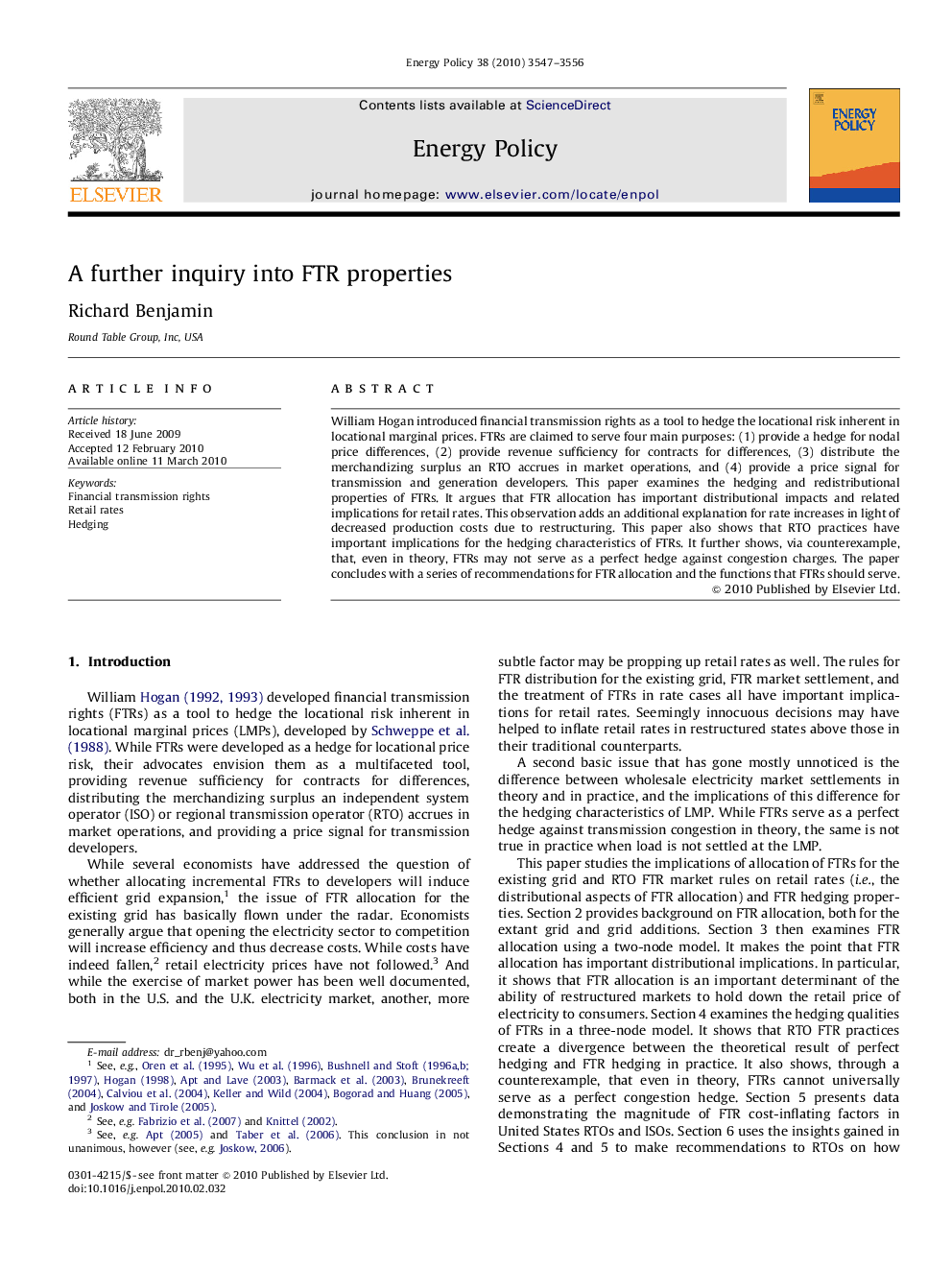| Article ID | Journal | Published Year | Pages | File Type |
|---|---|---|---|---|
| 993310 | Energy Policy | 2010 | 10 Pages |
William Hogan introduced financial transmission rights as a tool to hedge the locational risk inherent in locational marginal prices. FTRs are claimed to serve four main purposes: (1) provide a hedge for nodal price differences, (2) provide revenue sufficiency for contracts for differences, (3) distribute the merchandizing surplus an RTO accrues in market operations, and (4) provide a price signal for transmission and generation developers. This paper examines the hedging and redistributional properties of FTRs. It argues that FTR allocation has important distributional impacts and related implications for retail rates. This observation adds an additional explanation for rate increases in light of decreased production costs due to restructuring. This paper also shows that RTO practices have important implications for the hedging characteristics of FTRs. It further shows, via counterexample, that, even in theory, FTRs may not serve as a perfect hedge against congestion charges. The paper concludes with a series of recommendations for FTR allocation and the functions that FTRs should serve.
